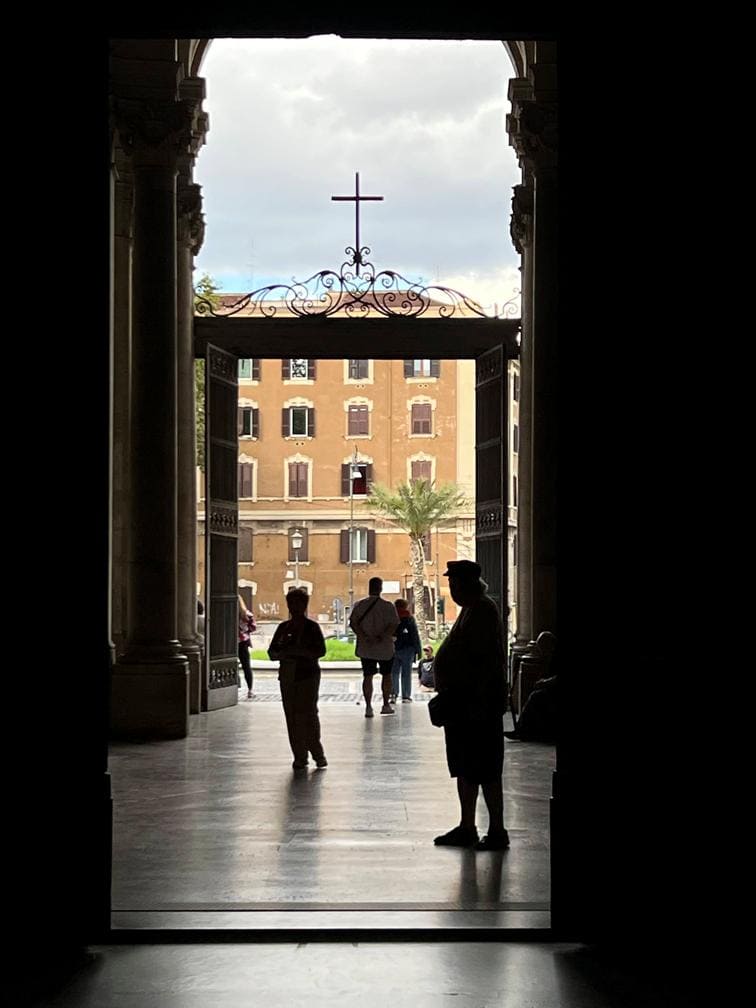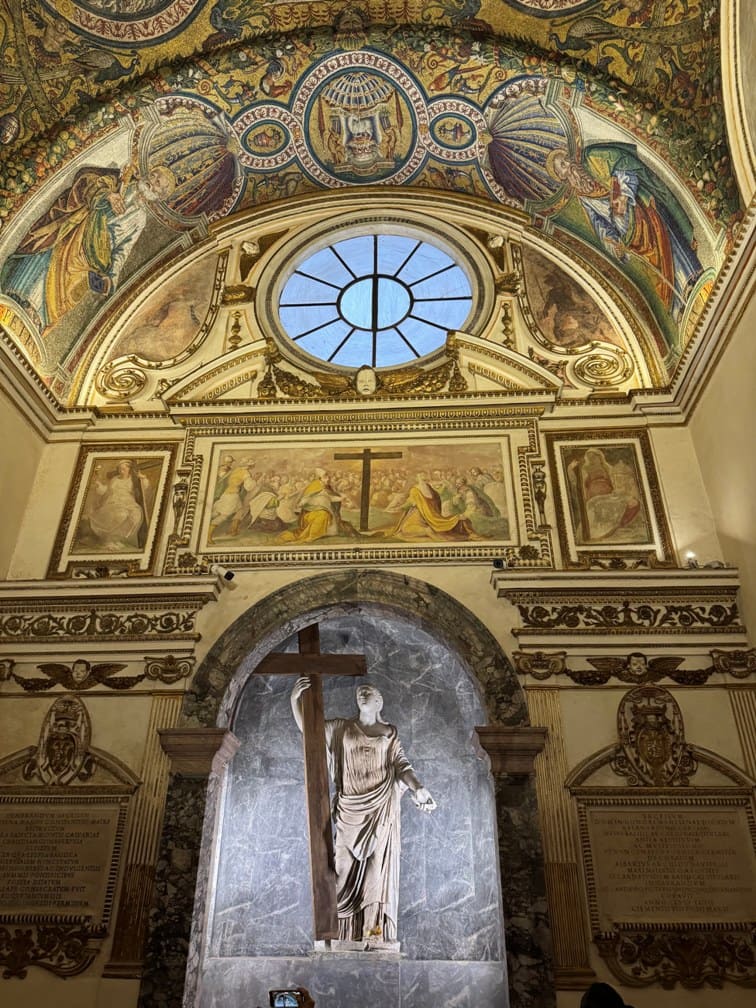This fall, I had the gift of traveling to Italy for a pilgrimage through Rome and Assisi during the Jubilee Year. It was a journey of a lifetime— walking through sacred spaces, surrounded by history, art, and deep devotion. But as I moved from one ancient church to another, I realized something unexpected: this trip wasn’t only about seeing the sites. It was about *feeling* them — slowing down, being present, and letting each moment unfold.
In that way, it reminded me of Pilates.
The Power of Ritual
My pilgrimage caused me to reflect on many areas of my life. I’ve always felt that Pilates and Catholicism share many parallels — a realization that deepened during my conversion in 2017. Both are rooted in structure, discipline, and devotion. They each have rituals, an order, a clear way of doing things. Nothing is just thrown together.
Very little is known about what faith Joseph Pilates practiced — his father was Greek, his mother German — but he absolutely believed in order and intention. His Mat work follows a specific sequence, and he laid it all out in his 1945 book, *Return to Life*. It’s not random; it’s a method, just as the Catholic Mass has a liturgy. There’s reverence in the repetition, purpose in the sequence, and transformation through consistency.
When you go to Catholic Mass, you know what’s happening — the rhythm, the prayers, the responses. There’s comfort in that familiarity. The same is true in Classical Pilates. You know what you’re in for. Amid all the noise and confusion about what is or isn’t Pilates, the Classical method remains clear and true. If you train at a Romana’s Pilates studio, you can travel anywhere in the world, step into another Romana’s studio, and it will feel familiar. You’re not starting from scratch — you’re continuing a lineage, a shared practice, built on integrity and order.

Practice Over Perfection
In Assisi, walking the same hills where St. Francis once walked, his message was one of simplicity — finding grace in small things, joy in repetition, and peace in the ordinary.
It’s the same in Pilates. The goal isn’t to “master” the work but to return to it faithfully, again and again, with curiosity. Each session, like each prayer, reveals something new. You don’t force progress; you allow it to unfold through steady, consistent effort.

The Jubilee Year: Hope, Forgiveness, and Renewal
This year’s pilgrimage was especially meaningful because it was a Jubilee Year — a time when the Holy Doors are opened. Pilgrims from all over the world travel to walk through them, symbolizing hope, forgiveness, and renewal.
For me, it was a reminder that we always have the opportunity to start fresh. In Pilates, that same idea applies. Each session is a opportunity — to focus, breathe, and move forward with purpose. Every time you walk into the studio, you’re renewing your commitment to your health and well-being — body, mind, and spirit.
Stillness Is Its Own Kind of Strength
Pilgrimage days were long — full of walking, waiting, and moments of awe that asked for quiet reflection. In our modern lives, stillness can feel like wasted time. Yet, in Assisi’s quiet stone streets at night or early morning, it was refreshing.
In Classical Pilates, the pause between movements isn’t downtime or a rest— it’s part of the exercise, the transition. It’s where you gather your control, reset your alignment, and prepare the body for what comes next. That stillness sharpens focus and creates flow with intention, not momentum.
❤️ Coming Home Renewed (and Real)
I’d love to say I came home feeling renewed, but the truth is — we packed a lot into our trip. We saw so many beautiful places that by the time I got home, I was exhausted. It took several days to unpack it all — the luggage and the experience. Everywhere we went was full of people, and there were moments of chaos mixed with awe. In those noisy moments, I tried my best to pause and take it in.
Our world moves fast, and it’s easy to fill every minute with something “productive.” This pilgrimage reminded me to look for quiet moments throughout the day and allow myself to actually sit in them. Just like in Pilates, that pause — the breath, the stillness — is where we reset and reconnect and turn inward. That’s where the clarity comes from.


